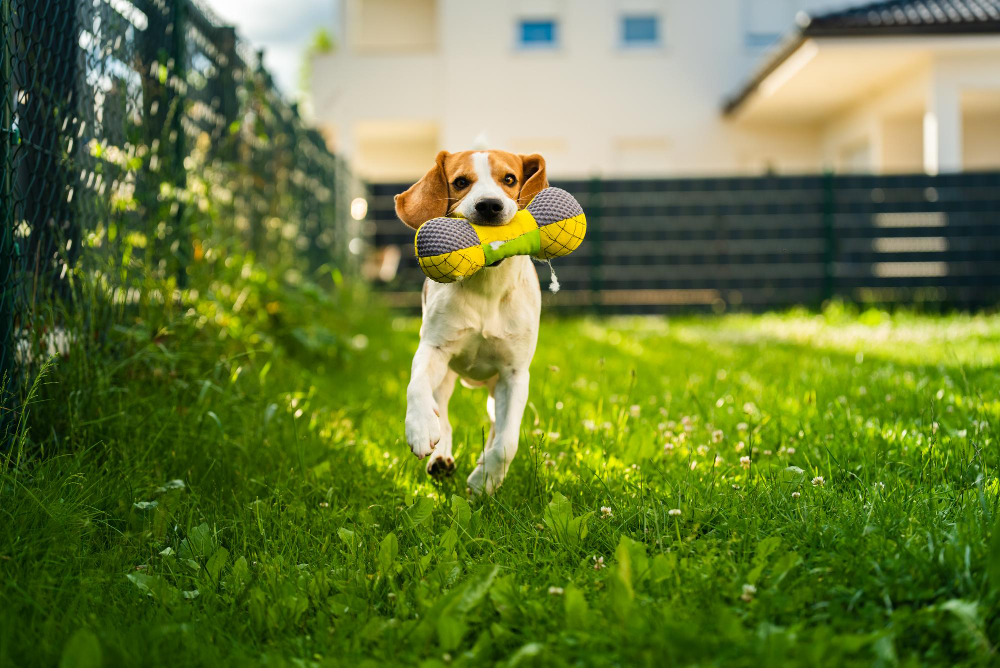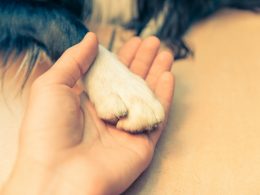Do you love your dog but at the same time love your yard and don’t know what else to do to keep the yard in good condition, with green grass? Your problems are over! Learn how to make a beautiful backyard your dog likes and have fun in it.
What Can I Use Instead Of Grass For My Dog?
If you already have a grassy yard and don’t want to get rid of it, check out these “Can you save a tree from dog pee?” articles. And “What can I give my dog to stop burning my grass?”.
There are several options to use in place of grass, such as rocks, gravel, sand, and concrete. The choice will depend on what you like best and what suits the landscape of your garden.
Dogs prefer places with gravel and sand, as they can exercise their natural behavior, increasing well-being. To assemble a gravel box, you will need a tape measure or measuring tape, bedim blanket, wood, and gravel.
- Measure the place where you will place the gravel box;
- Purchase the bedim blanket in the size of the measured location. You can put it on top of the ground.
- Buy four pieces of wood of your choice with the measure you took, deposit them in the garden, and sink them in the area, leaving a space left above to prevent your dog from putting the gravel out of the box.
- Place the gravel on top of the bedim blanket, ensuring the place is well filled.
What Can You Use Instead Of Mulch For Dogs?
There are options for those who want to replace the grass but don’t want to lose the essence of a garden, keeping with bright colors and the natural aspect of the landscape. In these cases, you can substitute shrubs and other foliage, but be careful because some plants can be toxic to pets, so be very careful and consult an expert to make the best choice.
How Do I Build A Dog Area In My Backyard?
You can delimit the area your dog will have access to on the patio and use recyclable materials to build playpens. In this way, in addition to making your backyard beautiful, you will also be helping the environment.
If you want to build a house for your dog in the backyard, read this article “dog den ideas” in it, you will find several tips on how to build a house for dogs that is safe and comfortable.
How Can I Make My Backyard More Fun For My Dog?
You can bet on environmental enrichment to make the farm attractive and fun for dogs. In other words, it creates a dynamic, complex, and interactive environment that provides physical and mental “challenges” similar to nature’s. For this, invest in physical enrichment, with the construction of hiding places and obstacles, as if it were a large playground. Interactive toys are also a great alternative to exploring your dogs’ cognition.
Toxic Plants For Dogs
When designing a dog-safe garden, it is necessary to research the types of materials, plants, and covers you will use, as some can be toxic for dogs, and when ingesting them, your dog may show signs such as vomiting, diarrhea, and malaise. So, always check if the plants you want to use in your garden are pet friendly. Check some plants that are the most toxic for our pets and should never be made available to them under any circumstances:
- Azalea – Azalea is poisonous to dogs, especially when they are puppies. Curious animals begin to play with the flower – which is light and provokes the animal when in the wind – which ends up being ingested. An excess amount of the animal’s weight, equivalent to 1% of its weight, can be poisonous, but this also depends on the sensitivity of each one.
- Lilies – All parts of the lily are toxic. Signs of intoxication in animals are oral irritation, uncomfortable and itchy sensation on the skin or mucous membranes, eye irritation, difficulty swallowing, and, in more severe cases, difficulty breathing. The flower can cause changes in kidney and neurological functions.
- Sago Palm – Grown for its attractive fronds and unfussy nature, sago palm (Cycas revoluta) is poisonous to dogs, especially its roots and seeds. This tree has a high content of Cycasin and Macrozamin toxins, which can be very dangerous for animals, and treatment should be sought immediately.
- Amaryllis(Hippeastrum) – Amaryllis is also toxic to pets. Lorin poisoning causes a wide range of adverse effects in dogs, cats, and horses, while cats are more sensitive. Symptoms of poisoning include vomiting, depression, diarrhea, drooling, abdominal discomfort, lack of appetite, and tremors. Pets are often poisoned by digging up and eating the ornamental amaryllis lily bulbs in the garden. Fortunately, severe cases of poisoning are rare, as animals rarely eat enough bulbs to experience significant adverse health effects.
- Aloe Vera – Popularized for its many therapeutic uses, aloe (Aloe vera) is a succulent that grows natively in tropical regions worldwide. This plant is cultivated as a houseplant or outdoors in mild climates. Although it has several healing properties for humans, aloe vera (or aloe vera) is toxic to dogs. The local use of the gel present inside the leaves does not cause any problems, but other components of the plant can irritate the dog’s digestive system if ingested.
- Tulips – Tulips have different colors and shapes, attracting pets’ curiosity. However, they have poison concentrated in the flower bulbs, which, when ingested, can cause mild to moderate toxic reactions, especially in cats.
- Hydrangea – Originally from Japan, the Hydrangea (Hydrangea macrophylla) has a great visual appeal, with large and colorful flowers used in different ornate environments. The plant is toxic, and the main culprit is a glycoside, an active ingredient that turns into cyanide — a potent poison — when it reaches the stomach.














